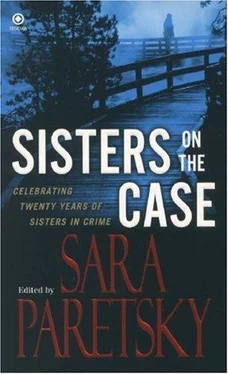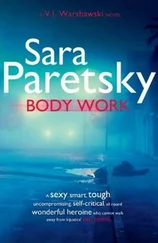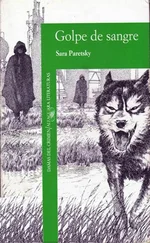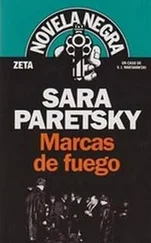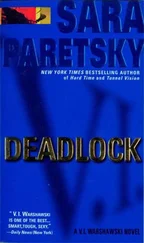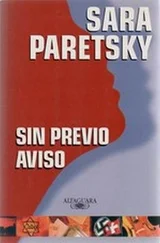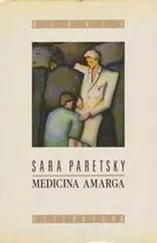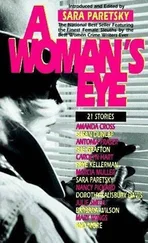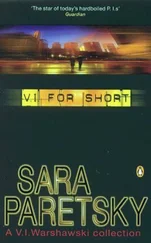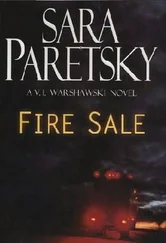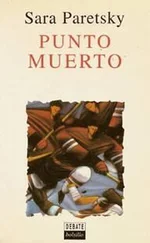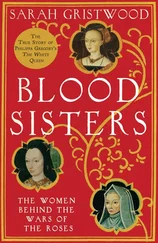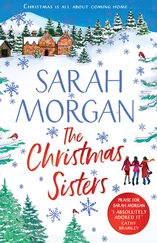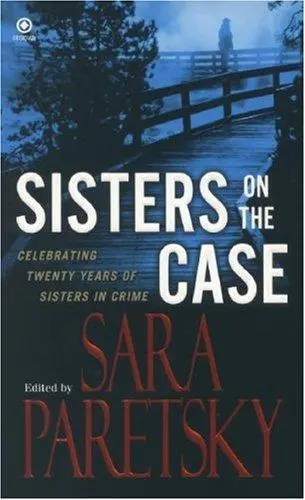
Sara Paretsky, Sue Henry, Susan Dunlap, P. M. Carlson, Rochelle Krich, Linda Grant, Carolyn Hart, Libby Fischer Hellmann,Nancy Pickard, Kate Grilley, Medora Sale, Barbara D’Amato, Claire McNab, Charlotte MacLeod, Annette Meyers, Kate Flora,Eve K. Sandstrom, Patricia Sprinkle, Margaret Maron, Dorothy Salisbury Davis
Sisters on the Case
Copyright © Sara Paretsky, 2007
For Anna Katherine Green,
and all the other women who blazed a trail
for Sisters in Crime to follow
Sisters on the Case Introduction
Women writers and their detectives have been an important part of crime fiction since its beginnings. Who doesn’t know Miss Marple or Peter Wimsey or Ebenezer Gryce and Amelia Butterworth? Wait: Butterworth? Gryce? Those aren’t household names.
A century ago, they were. Both were detectives created by Anna Katherine Green, one of the most successful crime writers of the last hundred years. At a time when America’s population was a quarter what it is today, Green’s books usually sold around a million copies. She was President Wilson’s favorite genre writer, she knew all the luminaries of the day, and her detective, Ebenezer Gryce, anticipated Sherlock Holmes by a decade.
Gryce did the same kind of forensic research as Holmes, examining medical evidence, typefaces, fabrics, buttons, and drawing conclusions based on physical evidence. Green was the first English-language writer to create that most beloved figure in crime fiction: the series character, whose insights and foibles are opaque to other figures in the story, but well-known to the reader.
In 1897, Green added Amelia Butterworth as an amateur aide-de-camp to Mr. Gryce. On more than one occasion, Ms. Butterworth’s own insights saved Mr. Gryce from making a serious blunder. In 1915, Green created a bold new phenomenon, Violet Strange, a female private inquiry agent. Almost a century before V. I. Warshawski’s arrival on the scene, Anna Katherine Green had created not one but two women detectives.
There are a number of differences between Ebenezer Gryce and Sherlock Holmes, but the biggest is this: Anna Katherine Green is out of print, while Conan Doyle never has been. Green is part of that long tradition of women whose voices fall off the margins of the page into obscurity.
In 1986, in a small room at a Baltimore hotel, twenty-six women came together over stale sweet rolls to discuss the hurdles we had to jump as we built our careers as crime writers. We were concerned that our own hard work and talent weren’t enough to keep our own voices on the page.
The issues discussed ranged from the isolation that affects all writers, to the marginalization of novels by women-they stayed in print about a third as long as those of our male colleagues; they were reviewed (as we later learned) with a seventh the frequency. At crime conferences, we might be told that it was wonderful we had a hobby, so that we didn’t make heavy demands on our husbands when they came home from work. Libraries with restricted budgets would buy works by men, because, as one librarian put it, women will read books by men, but men won’t read those by women.
Many readers of crime fiction didn’t know we were alive, let alone producing wonderful novels. Indeed, from 1960 to 1985, a woman had a better chance of winning the Nobel Prize in Physics than she did of winning the Mystery Writers of America’s prize for best novel of the year.
I had been hearing about these issues for almost a year from women all over the country. With the support of my editor at Ballantine, Mary Ann Eckels, I convened the Baltimore meeting to see if my sister writers cared enough about these problems to organize and change them. Out of that meeting grew Sisters in Crime, and 2006-2007 marked our twentieth anniversary; this collection celebrates that milestone.
In 1987, when about a hundred women were involved, we decided we needed a structure to help keep people in touch with each other, and to make sure the concerns of all the members were heard. We formed a steering committee: Dorothy Salisbury Davis, Charlotte MacLeod, Nancy Pickard and I were writers; Kate Mattes owned a bookstore; Betty Francis, a corporate executive by day, was a reader with thought-provoking insights into both books and organizations.
That spring, we decided on our first two projects. One was tracking book reviews to see how women fared in the major national publications, and in our own regional papers and magazines; the other, the brochure Shameless Promotion for Brazen Hussies . Too many of us had been raised to think that only a brazen hussy tooted her own horn-and we knew that if we wanted people to hear about us, we were going to have to start shouting our names in public. A few years later, Carolyn Hart, Linda Grant, and Sharyn McCrumb undertook a heroic effort in creating Sisters’ Books in Print, so we’d have a publication to take to bookstores and libraries.
In the last twenty years, the organization has grown to nearly four thousand members worldwide. What’s truly wonderful is that readers have grown with us. At first, bookstores or libraries looking at our Books in Print would try a few books by our members. These disappeared off the shelves so quickly that they tried a whole shelf, and that grew in turn to an entire wall. Over and over, bookstores told us they heard from women who said, ‘‘I hadn’t read a mystery since I outgrew Nancy Drew, because the characters just didn’t speak to me. Now I’m finding dozens of books with characters I can identify with.’’ We in Sisters in Crime feel proud of our role in growing the market for mystery readers.
Since 1987, we’ve had twenty presidents with very different profiles and ideas, but we’ve all shared one goal: the support and promotion of books by women, to make sure that we don’t fall off the page again.
The stories in this collection are by the women who helped build the organization. We were honored from the start by Dorothy Salisbury Davis’s involvement. A distinguished writer with a long history of important novels, she brought our voice to the larger mystery community; we received recognition and respect sooner than we might otherwise have found either. She has written another important story for this collection, ‘‘Dies Irae,’’ set in her youth, during the waning days of Prohibition. As always, the voices of her characters bring them vividly to life: two sisters, living side by side but distinctly not in harmony.
Charlotte MacLeod, also on the original steering committee, died several years ago, but we are delighted to have one of her stories, ‘‘Lady Patterly’s Lover,’’ to include here.
Altogether, there are twenty stories. They show the different sensibilities of the women active in the crime-writing world of the last two decades. P. M. Carlson, with her sparkling homage to Chicago’s theater scene in the 1880s; Nancy Pickard, always taking new risks, showing us an unusual twist on the mob; and Linda Grant, pushing maternal love to its extremes. Libby Fischer Hellmann turned to Grant Park during the 1968 riots over the Democratic convention for inspiration, while Susan Dunlap’s ‘‘Hearing Her Name’’ shows some of the legacy of those turbulent times. Sue Henry’s elegiac prose is awe-inspiring in ‘‘Sister Death,’’ while Barb D’Amato chills in a different way in ‘‘Steak Tartare.’’
Dive in; see for yourself what sisters who are on the case can accomplish.
Sara Paretsky
Chicago, February 2007
Sister Death by Sue Henry
Читать дальше
